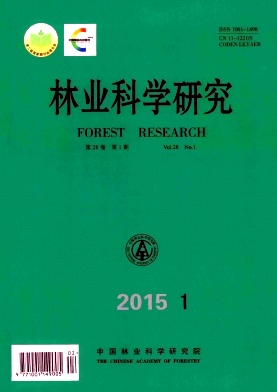|
[1]
|
孟宪宇. 测树学[J]. 北京:中国林业出版社.2006.
|
|
[2]
|
Muhairwe C K. Bark thickness equations of five commercial tree species in regrowth forests of Northern New South Wales[J]. Australian Forestry, 2000,63(1):34-43. |
|
[3]
|
Li R, Weiskittel A R. Estimating and predicting bark thickness for seven conifer species in the Acadian Region of North America using a mixed-effects modeling approach: comparison of model forms and subsampling strategies[J]. European Journal of Forest Research, 2011,130:219-233. |
|
[4]
|
陈东来,秦淑英.树皮厚度,树皮材积与直径和树高相关关系的研究[J]. 河北林学院学报, 1994, 9(3):248-250.
|
|
[5]
|
Ellis J C, Elliott D A. Log scaling guide for exporters . Forest
Res Bulletin, No. 221. New Zealand Forest Res Inst Ltd., Rotorua, New Zealand, 2001,53pp. |
|
[6]
|
Malone T, Liang J. A bark thickness model for white Spruce in Alaska Northern Forests[J]. International Journal of Forestry Research, 2009,9:1-5. |
|
[7]
|
Grosenbaugh L R. STX-FORTRAN 4 program for estimates of tree populations from 3P sample-tree-measurements [R]. USDA For Serv Res Pap, PSW-13. 1964,49p. |
|
[8]
|
Wingerd D E, Wiant H V Jr. Variables for predicting inside bark diameters of upper stems of Appalachian hardwoods[J]. Journal of Forestry, 1982, 80:791-792. |
|
[9]
|
Cao Q V, Pepper W D. Predicting inside bark diameter for shortleaf, loblolly, and longleaf pines[J]. Southern Journal of Applied Forestry, 1986,10:220-224. |
|
[10]
|
Maguire D A, Hann D W. Bark thickness and bark volume in southwestern Oregon Douglas-fir[J]. Western Journal of Applied Forestry, 1990,5(1):5-8. |
|
[11]
|
Laasasenaho J, Melkas T, Aldn S. Modeling bark thickness of picea abies with taper curve[J]. Forest Ecology and Management, 2005,206:35-47. |
|
[12]
|
Brooks J R, Jiang L. Comparison of prediction equations for estimating inside bark diameters for Yellow-Poplar, Red Maple, and Red Pine in West Virginia[J]. Northern Journal of Applied Forestry, 2009,26:5-8. |
|
[13]
|
Wilhelmsson L, Arlinger J, Spängberg K, et al. Models for predicting wood properties in terms of Picea abies and Pinus sylvestris in Sweden[J]. Scadivian Journal of Forest Research, 2002,17:330-350. |
|
[14]
|
罗建中, Roger Amold, 项东云, 等. 邓恩枝生长、木材密度和树皮厚度的遗传变异研究木[J]. 林业科学研究, 2009,22(6):758-764.
|
|
[15]
|
Laar A. Bark thickness and bark volume of Pinus patula in South Africa[J]. Southern Hemisphere,Forestry Journal, 2007.,69:165-168 |
|
[16]
|
Tewari V P, Mariswamy K M. Heartwood, sapwood and bark content of teak trees grown in Karnataka, India[J]. Journal of Forestry Research, 2013,24(4):721-725. |
|
[17]
|
Marshall H D, Murphy G E, Lachenbruch B. Effects of bark thickness estimates on optimal log merchandising[J]. Forest Products Journal, 2006, 56:87-92. |
|
[18]
|
Gordon A. Estimating bark thickness of Pinus radiata[J]. NZ J For Sci, 1983,13:340-348. |
|
[19]
|
Ritchie M W, Hann D W. Nonlinear equations for predicting diameter and squared diameter inside bark at breast height for Douglas-fir [R]. Forest Research Laboratory, Oregon State University. Research Paper 47, 1984,12 pp. |
|
[20]
|
Max T A, Burkhart H E. Segmented polynomial regression applied to taper equations[J]. Forest Science, 1976,22:283-289. |
|
[21]
|
姜立春, 刘瑞龙. 基于非线性混合模型的落叶松树干削度模型[J]. 林业科学,2011,47(4):101-106.
|





 DownLoad:
DownLoad: